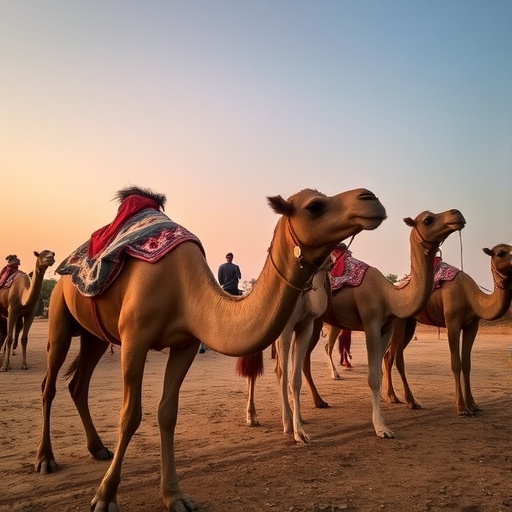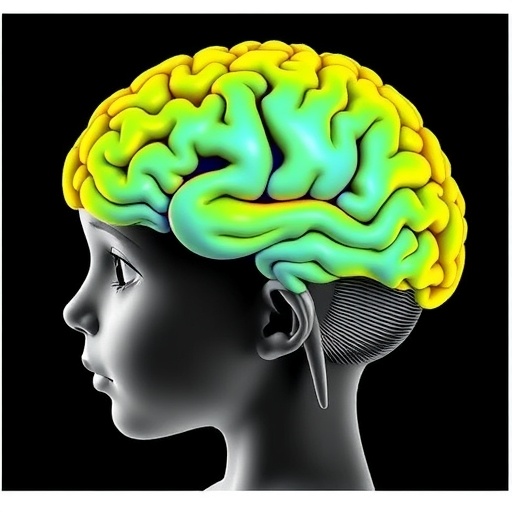In a groundbreaking development, researchers have unveiled a novel ICT-based system designed specifically for improving camel husbandry practices. This innovative system tackles some of the most pressing challenges faced by camel herders, combining cutting-edge technology with traditional practices to optimize rangeland assessment and enhance overall animal welfare. This represents a significant leap towards sustainable livestock management in regions where camel husbandry is vital for the local economy and cultural heritage.
The ICT-based system integrates a range of advanced technological features that facilitate online monitoring, real-time data collection, and analysis of camels’ health and productivity metrics. With rising global temperatures and the increasing scarcity of resources in arid regions, such tools are essential for ensuring that camel herders can make informed decisions regarding their livestock while adapting to changing environmental conditions. The system not only benefits the herders but also contributes to the sustainability of the ecosystems in which these animals thrive.
One of the standout features of the system is its ability to employ advanced phenotyping methods. By capturing detailed biometric data, including weight, height, and general health indicators, the system provides a comprehensive profile of each animal. This data is crucial for ensuring optimal breeding practices and improving the genetic stock of camel populations, which can lead to increased productivity and resilience in harsh climates. The comprehensive adoption of these technologies can thus revolutionize traditional camel husbandry practices.
Furthermore, the ICT-based system facilitates a more holistic approach to rangeland assessment. With advanced satellite imagery and terrain analysis capabilities, herders can assess the viability of rangelands in real-time. This allows them to understand grazing patterns and to make informed decisions about the utilization of land resources. By allocating grazing activities to the most suitable areas, herders can prevent overgrazing and promote sustainable land use practices that support both their livelihoods and environmental health.
Data shared between herders and agricultural specialists enhances collaborative efforts towards best practices in camel husbandry. This collaboration encourages knowledge exchange and helps in developing tailored strategies that meet the specific needs of different communities. By leveraging collective insights, the system significantly amplifies each herder’s knowledge base, fostering a sense of community and shared responsibility in preserving camel herding traditions while pushing for modernization.
Moreover, the system’s user-friendly interface ensures that even those with limited technological expertise can utilize its features effectively. Training modules and instructional resources are integral to the system, empowering herders with the skills needed to adopt these new technologies confidently. This empowerment is essential for fostering a culture of innovation amongst traditional herders who may have been hesitant to incorporate advanced technologies into their practices.
The implications of this ICT-based system extend beyond camel husbandry. As climate change increasingly impacts agricultural practices worldwide, this model can serve as a blueprint for other forms of livestock management and farming. The adaptability and resilience fostered through such technologies can transform agricultural systems in arid zones globally, providing valuable insights and methodologies that can advance sustainable agriculture everywhere.
In summary, the introduction of this novel ICT-based system for camel husbandry is poised to make a significant impact not just on the camel herding community, but on sustainable agricultural practices as a whole. By combining traditional practices with modern technology, the system addresses numerous challenges of contemporary livestock management. The integration of advanced monitoring and evaluation techniques ensures that herders can maintain a sustainable and productive relationship with their livestock while embracing the future of agriculture.
Notably, the successful implementation of this system hinges on continued support and collaboration from governments, NGOs, and industry stakeholders. Policy frameworks that facilitate technology transfer, provide funding for infrastructure, and encourage community participation will be essential in driving the widespread adoption of such innovations. It is the synergetic efforts of multiple sectors that will ultimately define the success of this initiative.
As we look to the future, further research and development in this area will likely yield even more powerful tools for livestock management. Innovations in artificial intelligence, machine learning, and IoT (Internet of Things) are already paving the way for a new era of smart agriculture. What’s clear is that the intersection of technology and traditional farming practices holds the promise of enhancing food security and environmental sustainability on a global scale.
In conclusion, the novel ICT-based system for camel husbandry is a powerful testament to the potential of technology to drive positive change in agricultural practices. By addressing the challenges unique to camel husbandry in arid regions, this system not only improves the productivity and welfare of camels but also strengthens the resilience of herding communities. As this initiative gathers momentum, it will pave the way for future innovations that can adapt to the challenges posed by climate change and resource scarcity.
This revolutionary approach is likely to capture the attention of stakeholders from various sectors, emphasizing the need for integrated solutions that embrace technology while respecting cultural heritage. The combination of online monitoring, phenotyping, and rangeland assessment signifies a new chapter in camel husbandry, setting a precedent for future agricultural practices across diverse environments.
In light of the urgency of sustainable food systems, the implications of this research extend far beyond camel husbandry. Demonstrating how technology can be intertwined with traditional agricultural practices may serve as an example for multiple regions and forms of livestock management around the globe. The narrative of innovation and sustainability continues to unfold, illustrating a future where technology and tradition can coexist and mutually thrive, ensuring food security for generations to come.
Subject of Research: ICT-based system for camel husbandry
Article Title: A novel ICT-based system for camel husbandry for online monitoring, phenotyping and rangeland assessment
Article References: Bitaraf Sani, M., Hasheminejhad, Y., Asadzadeh, N. et al. A novel ICT-based system for camel husbandry for online monitoring, phenotyping, and rangeland assessment. Discov Anim 2, 68 (2025). https://doi.org/10.1007/s44338-025-00121-7
Image Credits: AI Generated
DOI:
Keywords: camel husbandry, ICT, online monitoring, phenotyping, rangeland assessment
Tags: advanced phenotyping methods for livestockcamel herding challenges and solutionsdata-driven decisions for camel herdersenhancing camel breeding practicesenvironmental adaptation in camel farmingICT solutions for livestock productivityICT-based camel husbandry systemimproving animal welfare in arid regionsrangeland assessment and optimizationreal-time health monitoring for camelssustainable livestock managementtechnology integration in animal husbandry






